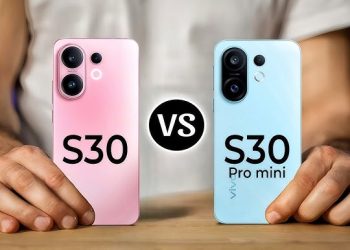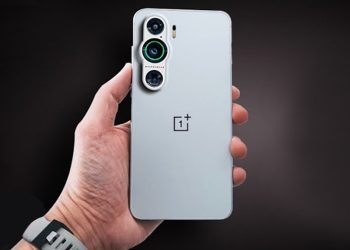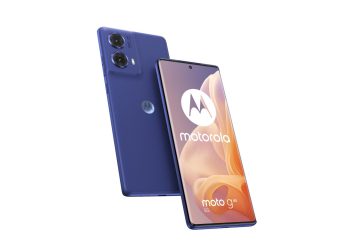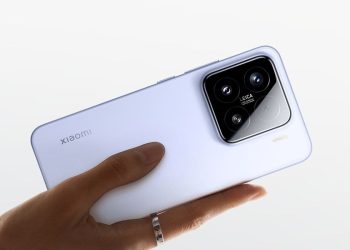which Android version is the best and which Android phone has the most optimized operating system
Pure Android
Pure Android (also known as Android Vanilla, AOSP or Android Stock) is the original version of Android, which is distributed by Google on the Android.com site or on smartphones produced directly by Google (currently the Pixel). It does not present any customization or superfluous apps: the only system apps are those provided by Google to access its services.
Unfortunately, this version of Android also has flaws: being devoid of customizations, it could be “very bare” from the point of view of integrated features to the point of often having to install third-party apps to have basic functions available on other versions of Android (especially those released by other smartphone manufacturers).

If we want to try pure Android and benefit from the quick updates we will have to buy the Google Pixel, the only one supported directly by Google and able to provide the features provided by the original version of Android.
Android One
Android One is the pure version of Android released by Google for other smartphones than the Pixels.
This version has the same advantages seen on pure Android for the Pixel: high system speed, presence of only Google system apps and constant updates (guaranteed for 2 years from the release date). This version of Android receives the updates a few weeks after the Pixels, so in fact, they are the cheapest way to always have Android updated without necessarily having to buy a Pixel (which still comes with a very high price).
In addition to sharing the merits, it also shares the defects of the pure Android: customizations are not allowed, therefore the system can be bare from the point of view of integrated features, which we will have to remedy with third-party apps.
Android (Go edition)
Another variant of pure Android is Android (Go edition), dedicated to low-end smartphones with very little RAM memory (it can also run with an amount of RAM equal to or less than 2 GB).
In this operating system, the Google system apps are extremely optimized to be lightweight . With this system, therefore, we will occupy very little internal memory even with the Google apps active, leaving a lot of space for the apps downloaded from the Play Store (which work the same way as the apps downloaded on any other phone).
The Go apps exchange very little network data compared to their normal counterparts, so as to be fluid even on new budget smartphones. The platform provides (in the Play Store Go) other “Go” apps, which are optimized to run on these smartphones with little memory while maintaining an enviable fluidity.
Android customized by manufacturers
The various smartphone manufacturers that adopt Android customize the system according to their needs, adding new system apps, a new launcher, new features in the settings menu and new features each time (not infrequently absent in the pure Android version).
These are undoubtedly the most popular Android systems, but they also have marked differences with pure Android – Which Android smartphone has the best system or between versions of Android from different manufacturers.
They tend to be fast only on very powerful devices (given a large number of system apps to be managed at startup) but they allow you to obtain a large number of features, bringing Android to a better usability level than the pure versions seen a little while ago.
If we want to find a defect it is often linked to updates: in addition to having to receive the update from Google (complete with approvals), the manufacturer must also update its apps and customizations: it is therefore not uncommon for these devices to receive the new ones. Android versions with delays of months or even a year after the release of the same version on pure Android!
Currently, the best custom Android systems are:
- OxygenOS: this customized version of Android is available on OnePlus smartphones; this Chinese manufacturer provides very powerful Android phones from a hardware point of view, a user interface equal to the pure one, no superfluous apps and very few customizations. It is currently the fastest to receive updates after pure Android.
- MIUI: the customized version of Android available on Xiaomi, Redmi and Poco smartphones.
it is deeply customized in every aspect, to the point of being similar to the iPhone system (Android only keeps Google apps and compatibility with apps).
This operating system receives many updates even on the cheapest smartphones and manages to integrate all the news even on older Android versions (in fact the Android version number is practically superfluous on a Xiaomi and POCO). - EMUI: this customized version of Android can be found on Huawei and Honor smartphones; it comes with an easy-to-use interface and various system apps developed exclusively by Huawei for its devices. Unfortunately, Huawei no longer has the permission of Google to use its store and its services, thus losing a lot of markets. Huawei, therefore, has a new ready system called Harmony OS, which has not yet been officially released.
- One UI: even if the name may not say anything, it represents the version of Android present on all modern Samsung Galaxy. It replaces Samsung Experience and the TouchWiz, which had so disappointed on previous Samsung models, presenting itself as a much more fluid system, with redesigned system apps and unique interface features (to also make the S-Pen, the stylus of the Galaxy Note). Updates have gotten better over time, but Samsung rarely updates cheaper models or models that are over 2 years old.
- ColorOS: with this name we identify the customized version of Android available on OPPO phones. This system comes very fast and quick in any situation, with the addition of many custom functions by the manufacturer. Average update times, often given as a priority to the most recent models (older models may have to wait longer).
Oppo and OnePlus should, in 2022, merge the two systems into one. - Realme UI: the new phone manufacturer Realme provides a customized version of Android called Realme UI, based on ColorOS (of which it follows most of the advantages). This system shows itself fast and taken with the system apps and with the apps downloaded from the Store, thus demonstrating a high level of optimization.
- Zen UI: this customized version of Android can be found on all Asus smartphones. It is heavily customized in every aspect, features a number of Asus-exclusive system apps and is fast and responsive enough. On the updates side, we are not at the levels of the best, following a policy very similar to Samsung (only the most recent).
- LG UX: As the name suggests, it is the customized version of Android that comes with LG smartphones. It is highly customized and sufficiently fluid for each usage scenario, as well as integrating a large number of features. Also, in this case, the updated policy is incomplete, where only high-end smartphones can hope to receive constant updates during the 2 years from the product’s release.
- Flyme OS: this customized version of Android can be found on Meizu smartphones. It looks like a highly customized system, to the point of getting closer to the iPhone interface than pure Android. Few proprietary system apps and a good number of updates, always able to introduce new features.
- Xperia UI: from the name, we can immediately understand that this version of Android is available on Sony smartphones; it comes as a responsive system, full of Sony system apps and with a good update policy.
Obviously, other versions of Android are also on the market, but the ones we have mentioned are the most famous, having gained a great deal of experience over the years.
Android Custom ROM
In addition to the versions customized by the manufacturers, we can download for free from the Web versions of Android edited and optimized by independent developers, who release them as Custom ROMs (ie as a ROM capable of completely replacing the manufacturer’s operating system). The most famous Custom ROM is definitely LineageOS, downloadable on the vast majority of Android devices on the market.
LineageOS and other Custom ROMs on the Internet can “bring back to life” smartphones abandoned by manufacturers, so as to continue using them with more recent Android versions. These systems receive constant updates and are often faster and more responsive than the original ROM, also thanks to the absence of useless system apps. The defects of these ROMs are often related to hardware incompatibilities or small problems with the interface, but nothing cannot be solved with a targeted update.
Conclusions
Today, it is difficult to say which phone has the best Android version, because it depends a lot on personal tastes and needs in terms of functionality and frequency of updates.
The most important thing is that the system is updated to a recent version or that it regularly receives security patches released by Google; currently, this is possible on Pixel smartphones, Android One smartphones, Xiaomi and OnePlus smartphones (which update their phones also to integrate only the security patches released by Google). that’s all about “Which Android smartphone has the best system“








